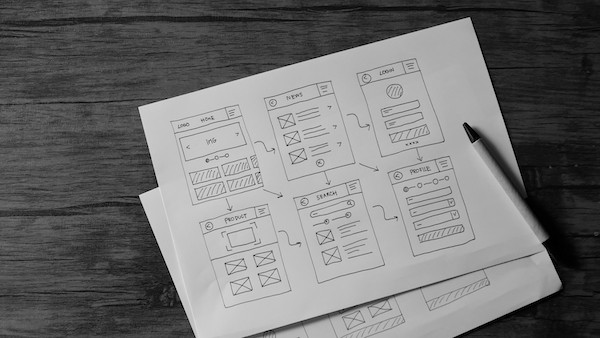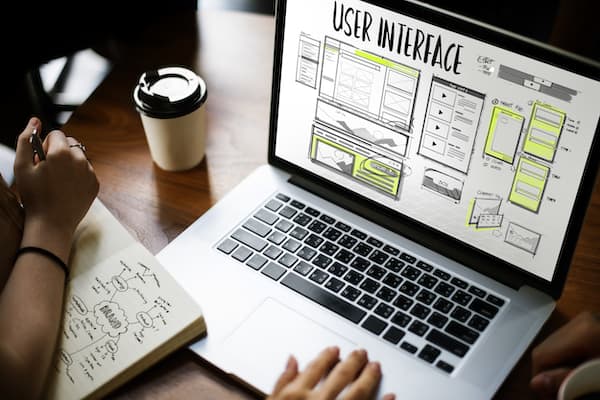The world of web design is vast and diverse.
It encompasses a wide range of skills, from creating stunning graphics to an in-depth understanding of coding languages.
A good web designer will produce not only aesthetically pleasing layouts but also well-functioning websites that are easy for customers and search engines alike.
As a web design company, we have found ourselves answering numerous questions from what used to be first-time customers. And though most of them have become our friends and have even helped us connect with newer customers, the questions still kept coming.
And though we love answering all those questions, we can’t help but ask, “What about others?”.
The point is we consider ourselves a professional web design company. And as a website design company, we won’t promise a client of our results that are beyond what we can offer.
But what about other small business owners – those that don’t have access to a professional web designer or currently don’t have the funds to hire one? Do we just leave them to fend for themselves?
Obviously, the answer is a big NO!
That is why we came up with this article that tackles everything there is to know about how to work with web designers, how to find the right web designer, and what to expect when working with web design companies or independent site designers.
Why is web design important?
A great-looking website can help you form a good first impression on your customers and allow you to nurture your leads and obtain more sales.
But more importantly, it provides a good user experience and helps your website visitors easily navigate the site.
A site with excellent web design can improve the following:
Good web design can also help build trust with your customers and even give them a sense of security. It provides site visitors with the impression that an actual person runs the company rather than just a faceless entity.
Keep in mind that when people visit an e-commerce website, they often look for these three things: credibility, professionalism and authority.
The first two are usually associated with what type of content is on the site, while the third one comes from how professional and organised everything looks and how pleasing to their eye the website appears to be.
Good web design helps achieve all three objectives, making visitors more inclined to stay longer at your website or share it with others via social media channels like Facebook or Twitter.
How to find the right web designer?
Whether you choose to go with web design firms or independent web designers, the first thing you should keep in mind is that “there is no such thing as the best designer”.
What you should ask instead is “how competent” your would-be site designer is. And the only way for you to arrive at an answer is by understanding and setting your own standards.
When hiring a web designer, start by eliminating possible candidates based on what you want the site to do for you.
To choose the right web designer for your e-commerce website, you need to…

Define the technology that you need
How do you want your website to function?
Are you looking to create a site that only includes contact information, an About page and perhaps some testimonials? Or are you looking for a site with specific functionality?
Answering this question is essential because it helps you determine the type of web designer or developer you will need to hire – or if a web design company is what you need.
For example, a pure-play web designer usually does not work with HTML and CSS. Pure-play site designers focus more on branding, colour palettes, photography, site feel, and user experience. Pure-play web designers often work with front-end developers to implement their designs.
If you want your website’s front end to be good, you need to prioritise hiring a front-end developer rather than a pure-play designer.
Of course, your best option would be to hire someone highly experienced in one area of web design and who is somewhat familiar with other aspects of web design.
This is where hiring web design companies is your best option, as most have experienced teams that cover all areas of web design.
In any case, make sure to list all your requirements in the job post and be specific about what you want from a web designer.
For example: If you are looking for someone who is experienced with responsive design, then that should be listed as one of your key criteria.
A good idea would also be to mention if you need content management system integration or not. You could also include specific skill sets such as Photoshop skills or HTML/CSS coding languages.
This will give potential designers enough information on how much work they’re getting into, and it’ll help weed out people who don’t have the necessary experience right off the bat.
Define the design needs of your site
What is the desired look and feel of your website?
Working with a web designer can be frustrating for some business owners, not because of bad web design skills but because it is challenging to translate vague ideas into a tangible design.
Becoming more specific about your design needs will produce a better end product. Explain your vision to your web designer, even if it’s just a scribble on a piece of paper – as that helps a lot!
You can also go around the net and collect web designs that you like – and then show said designs to your would-be web designer.
Professional web designers and web design companies will be able to tell you what is doable.
When deciding on a designer, it is crucial to make sure that they can tell you how they will approach your design.
The web designer or web design company that can provide you with a detailed approach is most likely your best option.

Define your budget in advance
What sort of budget do you have for this project?
To help you estimate the costs of hiring a web designer, it is important to know what the site design entails and how many pages there are to design.
Knowing your budget in advance can avoid any delays or miscommunication when working with your new designer.
Keep in mind that some designers have a set fee, whereas others charge by the hour or day.
It is important to know in advance what the pricing structure of the person you’re talking to is so that there are no surprises when drawing up contracts.
Define your budget in advance, and be clear on how much work needs to be done.
Put together an outline of each page which includes layout, size etc., so that they can provide you with their quote.
Define the purpose of your site in relation to your business
What’s your website’s role in your business?
- Think about your business and how you attract customers.
- Will it play a crucial role in increasing sales and attracting/gathering leads?
- Will it be used as a sort of brochure by you and your sales team?
- Will it be used to capture or convert site visitors into leads?
- Will your website require integration with business processes like inventory or order processing?
- Are you considering automating your marketing and sales processes using your website?
Are there any pre-existing software providers you want to integrate with your website now or in the future?
To reach a decision on who to hire as your site designer, you will need to establish the current and medium-term needs of your business, as all of that will reflect on the type of website you need to create – and the skillset of your would-be site designer.
So why did everything we just mentioned about finding the right web designer have to do with you?
Because it is your site, you need first to understand what it truly needs.
Keep in mind that web designers are just part of your team – and their main goal is to turn your ideas into a fully functional website.
They are not there to analyse what your website needs to help your business grow. That is not their job – it’s yours!
So if you want to find the right web designer for the job, put everything you need in black and white.
It will weed out the bad ones and leave you with a shortlist of competent designers to choose from.

Request for a project plan & contract
Asking for a written contract from your would-be web designer that details deliverables, costs, responsibilities, and more is not just a need. It’s a must!
Not only are contracts a way for you to legally protect yourself, it also gives you a sneak peek as to how professional he/she is and what exactly is he/she willing to risk and/or deliver to get you to say yes.
It is important to have a thorough understanding of what is expected and the timeline involved. The project plan should list who will be responsible for tasks such as acquiring logos, inputting content, and hosting videos or podcasts on their site.
You must be able to discuss this information thoroughly with your web designer so he can prioritise things accordingly.
If you want something implemented into your project design plan, make sure you include your web designer in all communication relating to that task.
What to expect when working with a web designer?
You have narrowed down your list or maybe already picked a candidate.
So now, what’s next?
For small business owners, a web designer might just be the first person they hire under their company or business.
But unlike other employees you will be hiring in the future, your web designer is tasked to get your business into the virtual world.
It is a huge job with an even bigger responsibility tied to it. And that is why your relationship with your web designer or web design company if you decide to go with one, should be as smooth sailing as possible.
Any design work delays caused during the web design process will not only cost you extra but will also damage the potential revenue your business could get from being visible online.
What do you need from your web designer? Well, it mostly has to do with honesty, clarity in communication, and establishing timelines.
These are all attributes that make a good relationship between business owners and their designers (or developers) successful and mutually beneficial.
You want someone willing to advise you when necessary but also take direction without being argumentative about it.
With that in mind, here are a few things you can do to establish a positive work relationship with your web designer or a web design company.

Be sure to define the web design process
Ask the designer to explain their services and how they work with clients.
Professional web designers and web design firms generally take the initiative to come prepared with a plan that:
- Details of how they will proceed with a web design project
- Answers any issues or questions you may have
- Works as a starting point and deadline for themselves and the project.
Take down notes and go back to them whenever you feel lost or confused.
The web design process starts with an assessment of your company or personal needs. Once you have that information assessed, the designer will work on wireframes to sketch out a preliminary layout for your website and then share those sketches so you can provide feedback before going any further.
Stick with the process
Asking for their process first and following it to the letter means sticking with the process.
Working in any creative field requires a client’s full attention to the project.
As a website owner, you may not always see why some of the steps in the process are necessary, but they’re often quite crucial to achieving success on any project.
Trust your instincts that you have chosen the right person for the job.
When you’re working with a web designer, don’t forget they, too, have been in this business for years. They know best why they set up specific policies and procedures.
Don’t get us wrong, though; we’re not saying to follow blindly. What we’re trying to get at is that it is okay to ask questions for clarification, but it’s not a good idea to challenge the process your web designer wants to implement.
If you have a background in web development, let your web designer know from the get-go. There is no point in hiding that fact to see if he/she is actually doing a good job. You’re not doing yourself any favour by doing so.
Keep in mind that this is a relationship built on trust.
Work with your web designer to find out what they are good at and use their strengths in the best possible way for you.
The process of working on a web design project can be stressful, so make sure that you have regular meetings scheduled between you and your web designer to keep things from getting too tense.
You might also want to set up some sort of communication system, like Slack or Basecamp – this will ensure that all important updates happen without constant emails back and forth!
Top Tip: Don’t taint your opinion with personal feelings towards your web designer, as it’s hard enough to find someone who knows how to do their job right! A healthy dose of professionalism helps keep things running smoothly.
Set realistic targets
Your budget dictates the skills and competency of the web designer you hired.
So when we said “set realistic targets” it’s actually a spin on the phrase you get what you pay for.
If you went with a “budget-friendly” pay rate, then temper your expectations – as affordable packages will not give you all the bells and whistles a premium plan does – but it will still get you started.
Also, be realistic with timeframes and understand that delays in your communication will result in delays in the finished product.
The most important thing to remember when it comes to target setting is that you’ll want to stay in touch with your web designer and work closely with them.
This will ensure the final web design matches what you “want” and what your business “needs”. And if it doesn’t, then you can just adjust accordingly!

Collaborate and not just dictate
Working with designers is a collaborative process in which you need to be supportive of their goals. This includes not taking over their job because it demoralises the entire process and will ultimately hurt the end product.
You’ll want to check in with your designer as often as necessary and allow them the autonomy and creativity that comes with their job.
This means being open-minded about any changes they might propose to you without feeling threatened or insulted. It’s all for a better end result!
When working collaboratively, it’s important not to micromanage everything because this will make things take longer than they need to be – which will then cause delays and frustrations on both ends of the spectrum when deadlines are missed.
Instead of dictating what should happen next, collaborate closely so that together you can come up with an efficient way forward.
Design drafts are just “drafts”
Design projects typically start with a design draft, and this is where you can refine and improve things.
Take note that drafts by no means show the exact capacity of your web designer. They are but mere unfinished ideas to see if things are in the right direction.
With that said, don’t be disappointed if the draft is not what you were expecting to see.
Your job at this stage is to provide your web designer with honest – but constructive – feedback on what design elements you are not satisfied with.
Your web designer should know what you like. Instead of telling them that they’re not doing a good job – tell them precisely where you want them to improve or how their draft is missing the mark.
If your site design still doesn’t satisfy you after several drafts, then kindly ask your web designer if there are any other design drafts available before deciding to move forward with this project.
Your web designer may have just missed crucial points which need more revisions than previously anticipated.
Give precise, honest feedback
When you don’t like an aspect of the design, be specific about what bothers you.
When you are dissatisfied with a designer’s work, tell the designer why and what changes need to be made.
If the initial design presented to you is completely off from what you were hoping to see, ask your web designer to submit other design drafts.
This may help him, or her develop more ideas and create something better suited to your needs.
When communicating with the designer about revisions, it helps if both parties are on the same page regarding what constitutes an improvement – not just for aesthetics but also for usability, especially when it comes to UX.
A web designer will be able to better understand your vision and provide designs that are more in line with what you want if you provide precise, honest and constructive feedback.
Learn to know when the design work is done
It is rare for a design work to be completely perfect.
There will always be minuscule details that you, as the site owner, would want to implement. Sometimes, these are disregarded by web designers not because they are lazy – but because said elements don’t work.
As mentioned earlier, and if you did your due diligence – trust the capability of your web designer.
If he/she says that the design work is done, then it probably is.
By no means, are we saying that you no longer need to ask for a few tweaks here and there. But to ask web designers to re-do an entire page section because you changed your mind about its structure somewhat stretches the definition of what a “tweak” is.
If you made it a habit to work closely with your web designer, your chances of not liking the final result are slim.
Conclusion
Creating a website from scratch is not an easy thing to do.
Usually, site owners’ style preferences and business needs clash with the design aesthetics of web designers.
And that is why we have been consistently repeating the power of collaboration and open communication throughout the article.
As a site owner, you need web designers and web design firms. As site designers, you need to hit the expectations of site owners to boost your personal portfolio.
At the end of the day, this give-and-take relationship has helped push e-commerce website design to newer heights.
As a web design company, we at XSquare believe we have contributed our fair share of further pushing web design.
As a Singapore-based web design company, we have handled multiple projects both within and outside Singapore, allowing us not just to have successful long-term relationships with clients but establish valuable friendships as well.
If you are a Singapore-based business owner on the lookout for someone to design your website – that is something we can definitely help you with.
Reach out to us on our Contact page and make sure to download our free resource guide – 5 steps to a winning website project; which is a guide to help you work with your web designer.